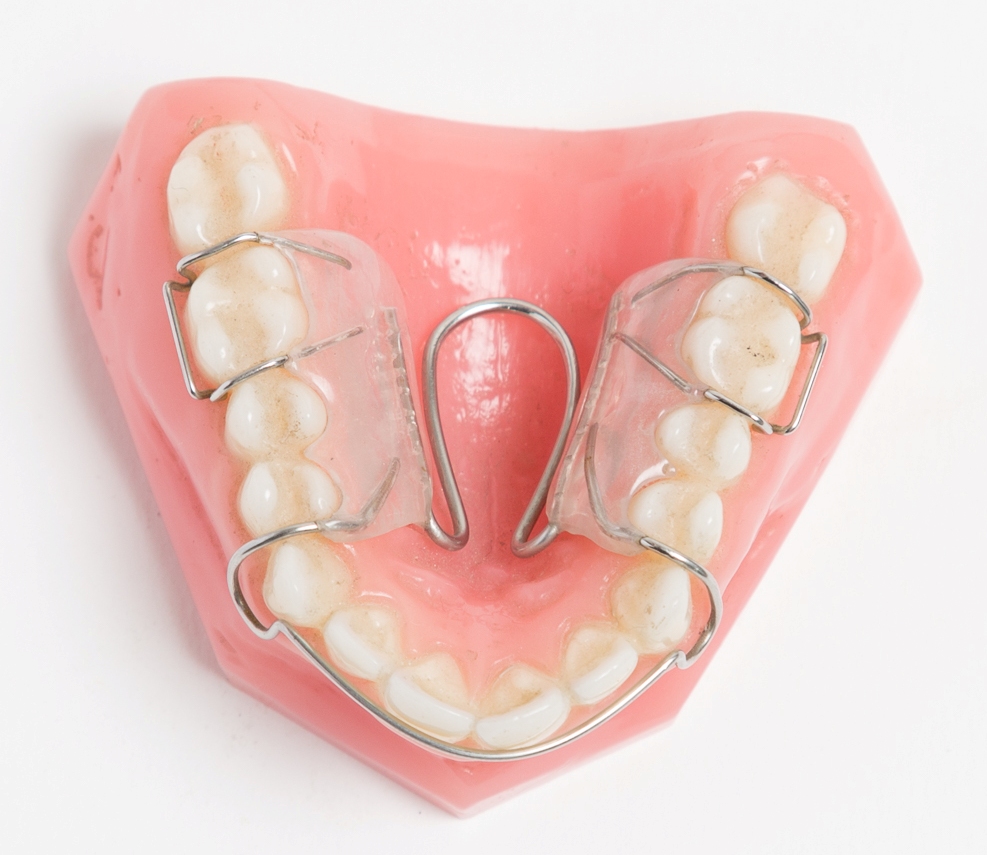Some landmarks in the development of removable appliance clasps
Early 1900s
Removable appliances consisted of a vulcanite plate, with simple clasps or capped molars for retention.
1906
V.H. Jackson introduced the Jackson clasp. The wire followed the medial and distal buccocervical and proximal undercuts. It
was easy to construct but not to adjust and modifications were not possible.
1926
V.H. Visick introduced the Visick clasp. It was based on the Jackson clasp but was modified by adding a spur on the palatal side. This provided additional retention but could be painful.
1935
Schwarz introduced the Arrowhead, or Schwarz, clasp. It consists of two or three arrowheads fitted into the interproximal area. The clasp has the advantage of being flexible and reliable but it was difficult to construct and required special pliers. It was introduced in England by Tischler.

Lower removable segmental expansion screw appliance, using Tischler clasps for retention. On acrylic model.
1949
Philip Adams introduced the Adams clasp. It follows the distobuccal and mesiobuccal undercuts. It became the most widely used clasp in removable appliances due to its versatility, excellent retention and unobtrusiveness. There are many modifications.

Expansion and labial segment alignment appliance with Adams clasps. Upper removable appliance. On acrylic model.